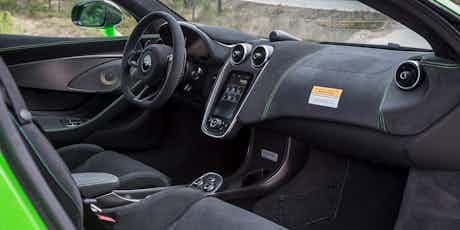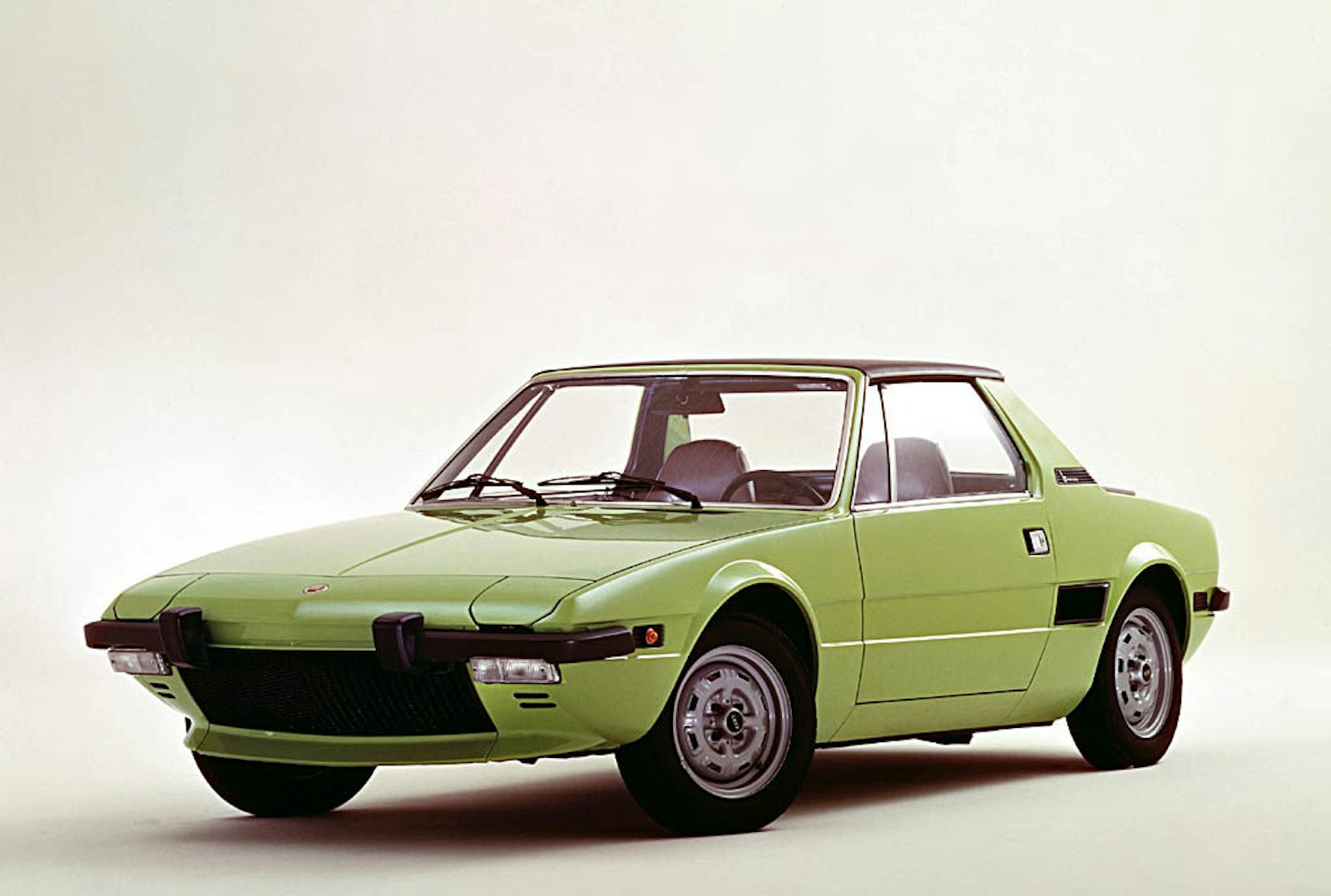What is Alcantara suede? Is it worth it?
May 20, 2022 by Graham King

Alcantara is a suede-like fabric that has become popular of late, but what is it, and is it worth having?

It may look like suede, it may feel like suede, but Alcantara is actually a synthetic textile made from a blend of polyester and polyurethane. It’s a trademarked, proprietary material (hence why the first letter of word is capitalised) that was developed in the 1970s by a Japanese chemist, and has been manufactured by the Italian company Alcantara ever since.
Similar fabrics with different names and made by other firms are available – if you come across UltraSuede or MicroSuede on an options list, these are comparable – but Alcantara made such an impact on the car industry that, as with Hoover, Kleenex and Thermos, the brand name has become shorthand for suede-like synthetic microfibre textiles.
Where is Alcantara used in car interiors?
Alcantara found favour as a covering for racing car steering wheels and gearlevers, and these are places where the fabric is commonly found in road cars featuring the material. But Alcantara can appear anywhere in a cabin: seats can be upholstered in Alcantara, dashboards can be covered in the material, while arm rests, door cards, transmission tunnels, sun visors and headliners (a car’s ceiling) can also be shod in Alcantara.

What are the pros and cons of Alcantara?
Pros
The reason Alcantara found favour on race-car gearlevers and steering wheels is that it provides much more grip than conventional leather or plastic. This is of huge benefit in hot, sweaty and oily race-car cabins, as is the fact its matte finish means it does not reflect sunlight back onto windscreens, or into the driver’s eyes.
Alcantara can be made flame retardant and is lighter and harder wearing than an equivalent suede leather. Plus, unlike leather, no animals are involved in its production, and it is vegan friendly. It’s soft texture and sporting heritage, meanwhile, mean Alcantara is perceived to have a premium image.
Cons
No material is perfect, and Alcantara is no exception to this rule. One of the most noticeable issues with Alcantara is that it can wear quite noticeably, which is something of a disadvantage given it is often fitted on areas that are touched and handled frequently. When it’s new, Alcantara has a soft, slightly fluffy look and feel – technically known as ‘nap’ – but over time it can become flat, and lose its softness. Badly worn Alcantara loses much of its visual appeal, and can feel hard and grainy or greasy to the touch. This is partly as Alcantara absorbs oils from your hands, and dirt from your clothes.
Regular cleaning of Alcantara can mitigate or prevent this, and while cleaning is relatively straightforward, Alcantara requires gentle cleaning solutions and brushes – check your car’s handbook or any product instructions before attempting to clean Alcantara.
The nap of Alcantara also means that sitting on seats covered in the material makes the fabric’s piles lie in a different direction from piles that have been untouched, resulting in what appears to be different shades of the material. This may not bother you, but it may irk more fastidious owners.

How does Alcantara compare to other car interior fabrics?
Alcantara is harder wearing and more moisture resistant than suede, while offering higher levels of grip than conventional leather or traditional fabrics. It’s not as hardy a material as traditional leather or fabric, though, and requires more regular cleaning. It also tends to either be offered as an optional extra or as part of a higher trim level. Prices for Alcantara will vary from car to car, but it’s often roughly the same price as leather, so think £1,000 to £3,000 or so.
What cars come with Alcantara?
Alcantara used to be the preserve of the most expensive performance cars, but the cost has come down significantly in recent years, so it now turns up in more mainstream cars, as well.
A large number of manufacturers use Alcantara somewhere in the interior of their sporty models. Some also use it in high-spec, non-sports models, as it looks and feels more expensive than cloth.
Some other manufacturers use a textile similar to Alcantara that isn’t Alcantara. Porsche, for instance, uses a material it calls Race-Tex (pictured above).

Is Alcantara worth it?
There’s no denying that Alcantara is a lovely material that can really lift a car’s cabin, but it does come with some drawbacks. If you’re happy with regularly cleaning it to preserve its softness, and it doesn’t bother you having the nap and fibres run in different directions depending on whether the surface have been disturbed, it’s definitely worth getting. If you prefer to just get in your car and drive, and like a quiet life where little maintenance and aftercare are required, however, it may be worth considering a different material finish.
Alcantara FAQs
How do you clean Alcantara?
The first rule of cleaning Alcantara is to read your car’s handbook before starting. The second rule is to not use harsh cleaning chemicals or stiff brushes. Start by trying rubbing with water and a microfibre cloth, and if this doesn’t not yield results consider a specialist upholstery cleaner that states it’s compatible with Alcantara.
Is Alcantara expensive?
Alcantara is more expensive than conventional fabrics, and roughly on a par with leather as a car material.
Is Alcantara waterproof?
Alcantara is water-resistant, and won’t be stained by water. It does absorb oils from your hands and any dirt that may be on your clothes, though, while it can also stain.
What is Alcantara made from?
Alcantara is made from a blend of 68% polyester and 32% polyurethane, synthetic textiles that are extruded, combined, and put through a variety of chemical and textile processes before becoming as Alcantara.
Is Alcantara vegan?
Yes: Alcantara does not utilise any animal byproducts, being composed of synthetic textiles.
Car Change? Carwow!
Looking for a new set of wheels? With Carwow you can sell your car quickly and for a fair price – as well as find great offers on your next one. Whether you’re looking to buy a car brand new, are after something used or you want to explore car leasing options, Carwow is your one stop shop for new car deals.















